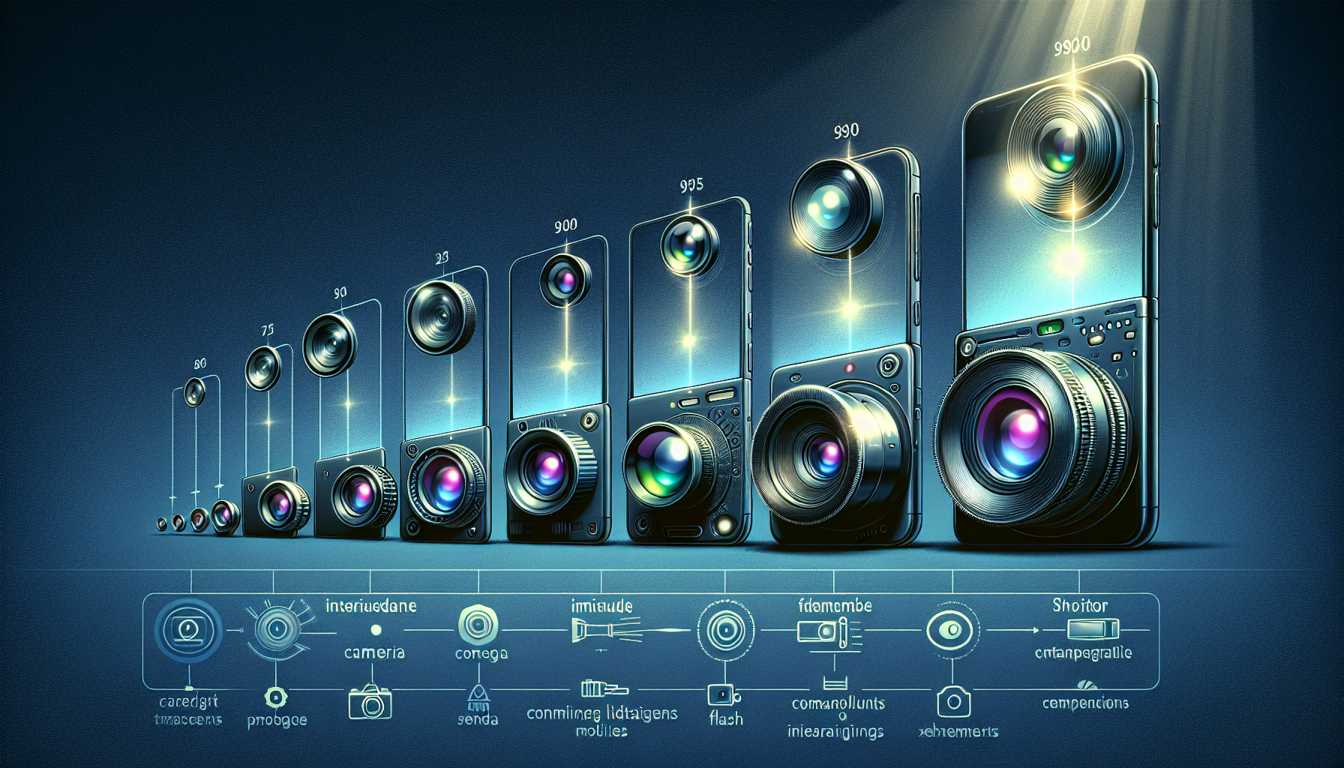
Behind the Lens: The Advancements in Smartphone Photography and Videography
The landscape of photography and videography has undergone a seismic shift with the advent of smartphones. No longer confined to professional studios or weighed down by heavy equipment, photographers and videographers can now capture stunning images and videos using a device that fits in their pocket. This article delves into the major advancements in smartphone photography and videography, highlighting specific products that have pushed the boundaries of what's possible.
The Evolution of Smartphone Cameras
Early Stages: The First Steps
In the early 2000s, smartphones began to incorporate cameras, but these were rudimentary, offering low resolution and basic functionality. The Nokia N95, released in 2007, was one of the first to challenge this trend, featuring a 5-megapixel camera that was groundbreaking for its time.
The Megapixel Race
As technology progressed, manufacturers entered a 'megapixel race' to deliver higher resolution cameras. While this resulted in clearer images, it soon became apparent that megapixels weren't the only factor in image quality.
The Focus Shifts to Quality
Recognizing the limitations of just increasing megapixels, companies like Apple and Samsung shifted focus towards improving lens quality, image processing algorithms, and sensor technology. The iPhone X and Samsung Galaxy S9, for instance, introduced dual-lens systems and advanced image stabilization, setting new standards for smartphone photography.
Breakthrough Features in Modern Smartphones
Computational Photography
Computational photography uses software algorithms to enhance image quality, going beyond the hardware's limitations. Google's Pixel series, particularly the Pixel 5, epitomizes this approach, using features like HDR+ and Night Sight to produce remarkable photos even in challenging lighting conditions.
AI and Machine Learning
AI and machine learning have become integral in optimizing camera settings for different scenes. Huawei's P30 Pro uses AI to recognize subjects and adjust settings accordingly, ensuring the best possible shot.
Enhanced Video Capabilities
Smartphones are not just about still photography; their video capabilities have also seen dramatic improvements. The iPhone 12 Pro Max offers Dolby Vision HDR recording, a feature once reserved for high-end video cameras.
Zoom Technology
Zoom technology has also advanced significantly. The Samsung Galaxy S20 Ultra showcases a 100x Space Zoom, combining optical and digital zoom to bring distant subjects closer than ever before.
Pro-Level Features
Smartphones are increasingly adopting features from professional cameras. For example, the Sony Xperia 1 II offers manual controls and RAW image support, appealing to professional photographers and videographers.
Impact on the Creative Industry
Democratization of Photography and Videography
The advancements in smartphone cameras have democratized photography and videography, making these art forms accessible to a wider audience. Content creators can now produce high-quality work without expensive equipment.
Social Media and Real-Time Sharing
Platforms like Instagram and TikTok have flourished, in part, due to the ease of capturing and sharing high-quality content from smartphones.
Challenges and Opportunities for Professionals
While some professionals view smartphones as a threat to traditional photography, others embrace them as tools for creativity and innovation.
The Future of Smartphone Photography and Videography
Emerging Technologies
Emerging technologies like 5G and augmented reality (AR) are set to further revolutionize smartphone photography and videography. 5G will enable quicker uploads and downloads of high-resolution content, while AR could introduce new forms of interactive and immersive content creation.
Sustainable and Ethical Considerations
As smartphone technology advances, manufacturers face growing pressure to address environmental and ethical concerns, including the sustainability of production processes and the sourcing of materials.
Conclusion
Smartphone photography and videography have come a long way, evolving from simple point-and-shoot capabilities to sophisticated imaging tools. As technology continues to advance, it will be exciting to see how these devices further blur the lines between amateur and professional content creation, offering new opportunities and challenges for photographers and videographers worldwide.



